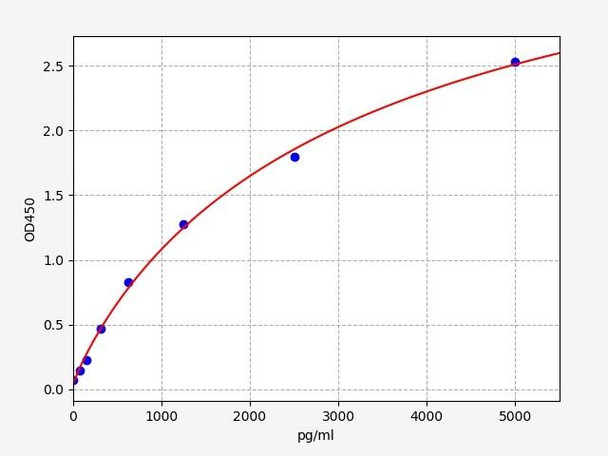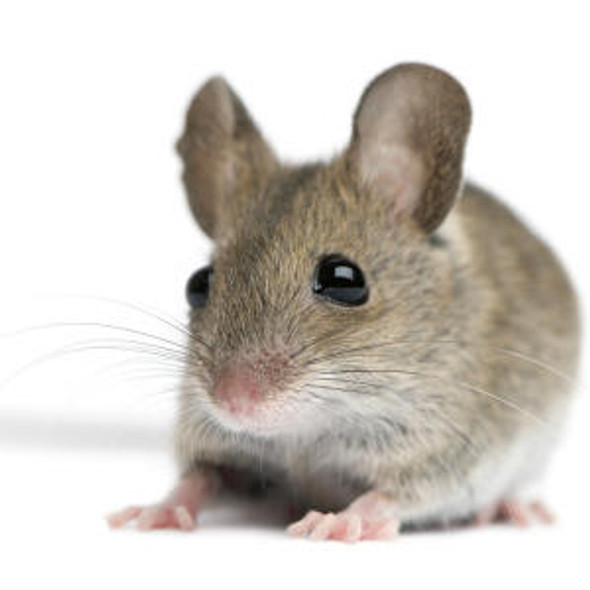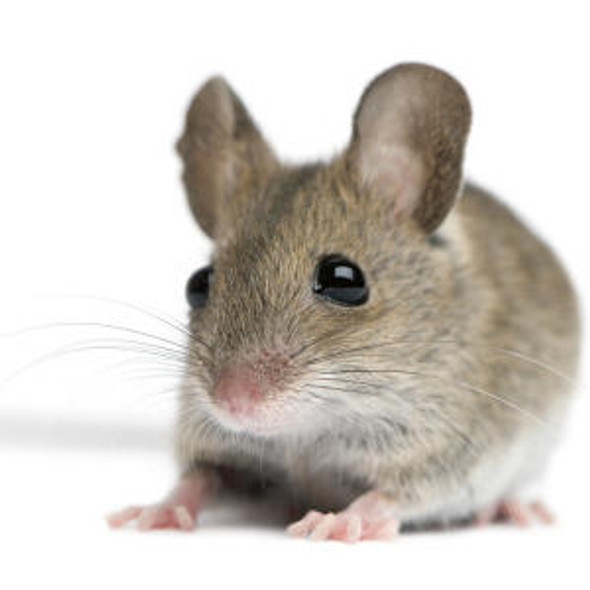Mouse WNT4(Protein Wnt-4) ELISA Kit
- SKU:
- MOFI01273
- Product Type:
- ELISA Kit
- Size:
- 96 Assays
- Uniprot:
- P22724
- Sensitivity:
- 46.875pg/ml
- Range:
- 78.125-5000pg/ml
- ELISA Type:
- Sandwich ELISA, Double Antibody
- Synonyms:
- Protein Wnt-4
- Reactivity:
- Mouse
Description
| Product Name: | Mouse WNT4(Protein Wnt-4) ELISA Kit |
| Product Code: | MOFI01273 |
| Size: | 96 Assays |
| Alias: | Protein Wnt-4 |
| Detection Method: | Sandwich ELISA |
| Application: | This immunoassay kit allows for the in vitro quantitative determination of Mouse WNT4 concentrations in serum plasma and other biological fluids. |
| Sensitivity: | 46.875pg/ml |
| Range: | 78.125-5000pg/ml |
| Storage: | 4°C for 6 months |
| Note: | For Research Use Only |
| Recovery: | Matrices listed below were spiked with certain level of Mouse WNT4 and the recovery rates were calculated by comparing the measured value to the expected amount of Mouse WNT4 in samples. Not Available. |
| Linearity: | The linearity of the kit was assayed by testing samples spiked with appropriate concentration of Mouse WNT4 and their serial dilutions. The results were demonstrated by the percentage of calculated concentration to the expected. Not Available. |
| Intra Assay: | CV <8% |
| Inter Assay: | CV <10% |
| Component | Quantity | Storage |
| ELISA Microplate (Dismountable) | 8-12 strips | 4°C for 6 months |
| Lyophilized Standard | 2 | 4°C/-20°C |
| Sample/Standard Dilution Buffer | 20ml | 4°C |
| Biotin-labeled Antibody(Concentrated) | 120ul | 4°C (Protect from light) |
| Antibody Dilution Buffer | 10ml | 4°C |
| HRP-Streptavidin Conjugate(SABC) | 120ul | 4°C (Protect from light) |
| SABC Dilution Buffer | 10ml | 4°C |
| TMB Substrate | 10ml | 4°C (Protect from light) |
| Stop Solution | 10ml | 4°C |
| Wash Buffer(25X) | 30ml | 4°C |
| Plate Sealer | 5 | - |
Other materials and equipment required:
- Microplate reader with 450 nm wavelength filter
- Multichannel Pipette, Pipette, microcentrifuge tubes and disposable pipette tips
- Incubator
- Deionized or distilled water
- Absorbent paper
- Buffer resevoir
| Uniprot | P22724 |
| UniProt Protein Function: | WNT4: Ligand for members of the frizzled family of seven transmembrane receptors. Probable developmental protein. May be a signaling molecule which affects the development of discrete regions of tissues. Is likely to signal over only few cell diameters. Overexpression may be associated with abnormal proliferation in human breast tissue. Defects in WNT4 are a cause of Rokitansky-Kuster-Hauser syndrome (RKH syndrome); also called Mayer- Rokitansky-Kuster-Hauser syndrome (MRKH syndrome or MRKH anomaly). RKH syndrome is characterized by utero-vaginal atresia in otherwise phenotypically normal female with a normal 46,XX karyotype. Anomalies of the genital tract range from upper vaginal atresia to total Muellerian agenesis with urinary tract abnormalities. It has an incidence of approximately 1 in 5'000 newborn girls. Defects in WNT4 are the cause of female sex reversal with dysgenesis of kidneys, adrenals, and lungs (SERKAL); also known as SERKAL syndrome. Defects in WNT4 are the cause of Muellerian aplasia (MULLAPL). Belongs to the Wnt family. Protein type: Secreted; Secreted, signal peptide Cellular Component: Golgi apparatus; proteinaceous extracellular matrix; extracellular space; cell surface; cytoplasm; extracellular region Molecular Function: protein binding; frizzled binding; transcription corepressor activity; receptor binding Biological Process: anatomical structure development; negative regulation of fibroblast growth factor receptor signaling pathway; positive regulation of transcription, DNA-dependent; multicellular organismal development; positive regulation of collagen biosynthetic process; T cell differentiation in the thymus; thyroid stimulating hormone secreting cell differentiation; androgen biosynthetic process; Wnt receptor signaling pathway through beta-catenin; signal transduction; somatotropin secreting cell differentiation; neuron differentiation; regulation of cell-cell adhesion; positive regulation of focal adhesion formation; cell-cell signaling; positive regulation of aldosterone biosynthetic process; positive regulation of stress fiber formation; embryonic epithelial tube formation; mesonephros development; cell differentiation; negative regulation of cell migration; female gonad development; cell fate commitment; Wnt receptor signaling pathway; positive regulation of meiosis; male gonad development; immature T cell proliferation in the thymus; cellular response to starvation; positive regulation of bone mineralization; positive regulation of osteoblast differentiation; negative regulation of cell differentiation; protein palmitoylation; branching morphogenesis of a tube; ureteric bud branching; gamete generation; hormone metabolic process; smooth muscle cell differentiation; female sex determination; tube morphogenesis; negative regulation of transcription, DNA-dependent; sex differentiation; metanephros development; oocyte development; positive regulation of GTPase activity |
| UniProt Protein Details: | |
| NCBI Summary: | |
| UniProt Code: | P22724 |
| NCBI GenInfo Identifier: | 6678595 |
| NCBI Gene ID: | 22417 |
| NCBI Accession: | NP_033549.1 |
| UniProt Secondary Accession: | P22724 |
| UniProt Related Accession: | P22724 |
| Molecular Weight: | 39,050 Da |
| NCBI Full Name: | protein Wnt-4 |
| NCBI Synonym Full Names: | wingless-type MMTV integration site family, member 4 |
| NCBI Official Symbol: | Wnt4 |
| NCBI Official Synonym Symbols: | Wnt-4 |
| NCBI Protein Information: | protein Wnt-4; signal molecule; wingless-related MMTV integration site 4 |
| UniProt Protein Name: | Protein Wnt-4 |
| UniProt Synonym Protein Names: | |
| Protein Family: | |
| UniProt Gene Name: | Wnt4 |
| UniProt Entry Name: | WNT4_MOUSE |
*Note: Protocols are specific to each batch/lot. For the correct instructions please follow the protocol included in your kit.
| Step | Procedure |
| 1. | Set standard, test sample and control (zero) wells on the pre-coated plate respectively, and then, record their positions. It is recommended to measure each standard and sample in duplicate. Wash plate 2 times before adding standard, sample and control (zero) wells! |
| 2. | Aliquot 0.1ml standard solutions into the standard wells. |
| 3. | Add 0.1 ml of Sample / Standard dilution buffer into the control (zero) well. |
| 4. | Add 0.1 ml of properly diluted sample (Human serum, plasma, tissue homogenates and other biological fluids.) into test sample wells. |
| 5. | Seal the plate with a cover and incubate at 37 °C for 90 min. |
| 6. | Remove the cover and discard the plate content, clap the plate on the absorbent filter papers or other absorbent material. Do NOT let the wells completely dry at any time. Wash plate X2. |
| 7. | Add 0.1 ml of Biotin- detection antibody working solution into the above wells (standard, test sample & zero wells). Add the solution at the bottom of each well without touching the side wall. |
| 8. | Seal the plate with a cover and incubate at 37°C for 60 min. |
| 9. | Remove the cover, and wash plate 3 times with Wash buffer. Let wash buffer rest in wells for 1 min between each wash. |
| 10. | Add 0.1 ml of SABC working solution into each well, cover the plate and incubate at 37°C for 30 min. |
| 11. | Remove the cover and wash plate 5 times with Wash buffer, and each time let the wash buffer stay in the wells for 1-2 min. |
| 12. | Add 90 µL of TMB substrate into each well, cover the plate and incubate at 37°C in dark within 10-20 min. (Note: This incubation time is for reference use only, the optimal time should be determined by end user.) And the shades of blue can be seen in the first 3-4 wells (with most concentrated standard solutions), the other wells show no obvious color. |
| 13. | Add 50 µL of Stop solution into each well and mix thoroughly. The color changes into yellow immediately. |
| 14. | Read the O.D. absorbance at 450 nm in a microplate reader immediately after adding the stop solution. |
When carrying out an ELISA assay it is important to prepare your samples in order to achieve the best possible results. Below we have a list of procedures for the preparation of samples for different sample types.
| Sample Type | Protocol |
| Serum: | If using serum separator tubes, allow samples to clot for 30 minutes at room temperature. Centrifuge for 10 minutes at 1,000x g. Collect the serum fraction and assay promptly or aliquot and store the samples at -80°C. Avoid multiple freeze-thaw cycles. If serum separator tubes are not being used, allow samples to clot overnight at 2-8°C. Centrifuge for 10 minutes at 1,000x g. Remove serum and assay promptly or aliquot and store the samples at -80°C. Avoid multiple freeze-thaw cycles. |
| Plasma: | Collect plasma using EDTA or heparin as an anticoagulant. Centrifuge samples at 4°C for 15 mins at 1000 - g within 30 mins of collection. Collect the plasma fraction and assay promptly or aliquot and store the samples at -80°C. Avoid multiple freeze-thaw cycles. Note: Over haemolysed samples are not suitable for use with this kit. |
| Urine & Cerebrospinal Fluid: | Collect the urine (mid-stream) in a sterile container, centrifuge for 20 mins at 2000-3000 rpm. Remove supernatant and assay immediately. If any precipitation is detected, repeat the centrifugation step. A similar protocol can be used for cerebrospinal fluid. |
| Cell culture supernatant: | Collect the cell culture media by pipette, followed by centrifugation at 4°C for 20 mins at 1500 rpm. Collect the clear supernatant and assay immediately. |
| Cell lysates: | Solubilize cells in lysis buffer and allow to sit on ice for 30 minutes. Centrifuge tubes at 14,000 x g for 5 minutes to remove insoluble material. Aliquot the supernatant into a new tube and discard the remaining whole cell extract. Quantify total protein concentration using a total protein assay. Assay immediately or aliquot and store at ≤ -20°C. |
| Tissue homogenates: | The preparation of tissue homogenates will vary depending upon tissue type. Rinse tissue with 1X PBS to remove excess blood & homogenize in 20ml of 1X PBS (including protease inhibitors) and store overnight at ≤ -20°C. Two freeze-thaw cycles are required to break the cell membranes. To further disrupt the cell membranes you can sonicate the samples. Centrifuge homogenates for 5 mins at 5000xg. Remove the supernatant and assay immediately or aliquot and store at -20°C or -80°C. |
| Tissue lysates: | Rinse tissue with PBS, cut into 1-2 mm pieces, and homogenize with a tissue homogenizer in PBS. Add an equal volume of RIPA buffer containing protease inhibitors and lyse tissues at room temperature for 30 minutes with gentle agitation. Centrifuge to remove debris. Quantify total protein concentration using a total protein assay. Assay immediately or aliquot and store at ≤ -20 °C. |
| Breast Milk: | Collect milk samples and centrifuge at 10,000 x g for 60 min at 4°C. Aliquot the supernatant and assay. For long term use, store samples at -80°C. Minimize freeze/thaw cycles. |










